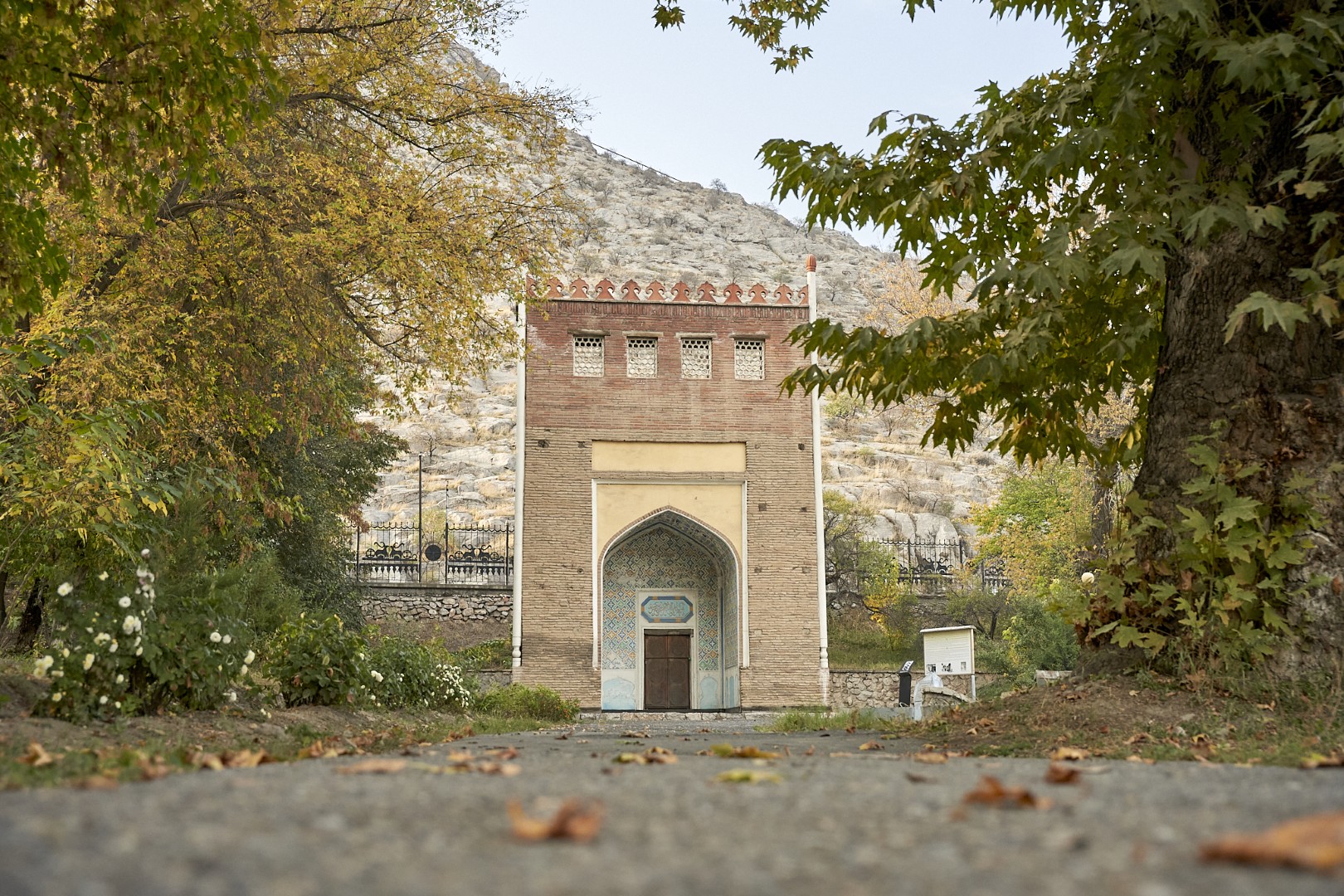

Entrance fee – Free

06:00 – 20:00

During prayer times
Women must cover their heads
Add to My Tour
Asaf ibn Burhia Mausoleum
Asaf ibn Burhia Mausoleum is located on the southeastern slope of Suleiman Mountain, and was built in the 18th century in the traditions of the Fergana architectural school. In historical chronicles it is mentioned as a mazar, or shrine. The cult of mazars in Islam began to develop from the 10th century, and the Sufis played a special role in this. Mosques, madrasahs and caravanserais were often built around them.
The Osh district documents of 1904 record that the mazar at that time consisted of three mosques and a cemetery containing the grave of Asaf ibn Burhia. The legend states that he was one of the companions of the legendary king Suleiman (Solomon), whose dying wish was to be buried at the foot of the mountain in Osh.
Historian Lev Zimin, in The Muslim Tale of Osh, published in 1913, recalls that he was not allowed to go inside. The keeper of the mazar told him that inside there was a large stone over the grave of Asaf ibn Burhia.
One of the inner walls of the mausoleum was decorated with an inscription in the thuluth calligraphy style with a blessing for Ramadan, and a hadith about Suleiman was written in gold letters above the main door on a blue background, with the name of the master, Ahmed, carved on the door itself. Unfortunately, none of this has survived to this day.

In 1978, the mosque building next to the mausoleum was demolished. Prior to that, it had been used as a warehouse for a cannery. In 1980-1982, the first plan for the reconstruction of the mausoleum was developed, and city architects managed to restore the original size of the mausoleum, along with its main façade. The panjara, the lace-patterned grid common in Central Asian Muslim architecture which allows ventilation and indirect lighting of the room, was also restored.
There is an unsolved mystery in the mausoleum. During interior excavations, archaeologists discovered brickwork laid out in a herringbone pattern, going under the back wall, typical of the 10th -12th centuries, when the Karakhanids reigned supreme here. What could have been built on this site in their time?

Locations Nearby
-

Madrasah of Khalmurzay and Mukhammedbay Turk
Today, in the square between Navoi, Kurmanjan Datka and Lenin Streets, it is difficult to find the outlines of the old quarter of Osh. It…
-
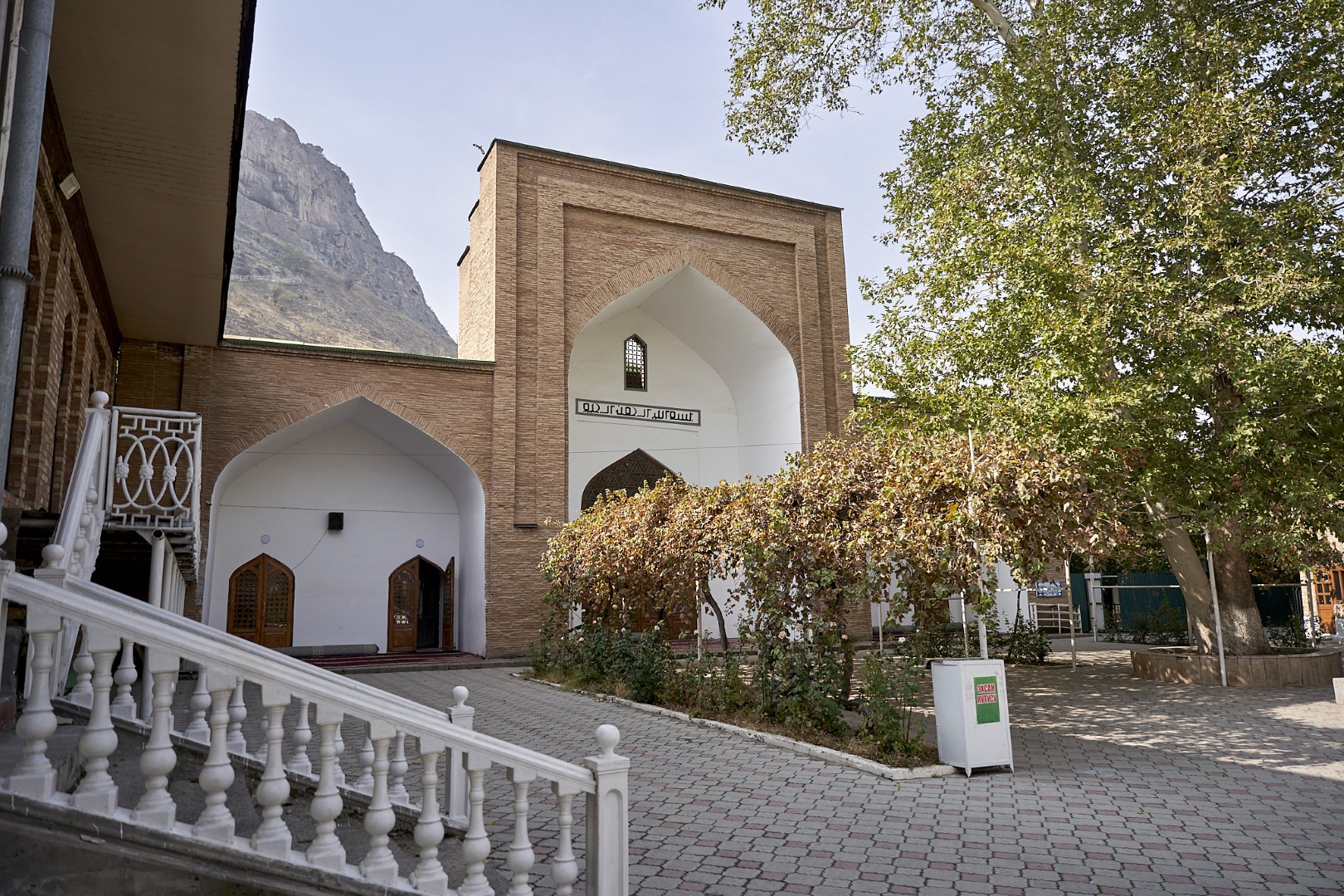
Rabat Abdullah Khan Mosque
Rabat Abdullah Khan Mosque, a historical and architectural monument of the Shaybanid era, is located at the northern foot of the Suleiman Mountain.
-
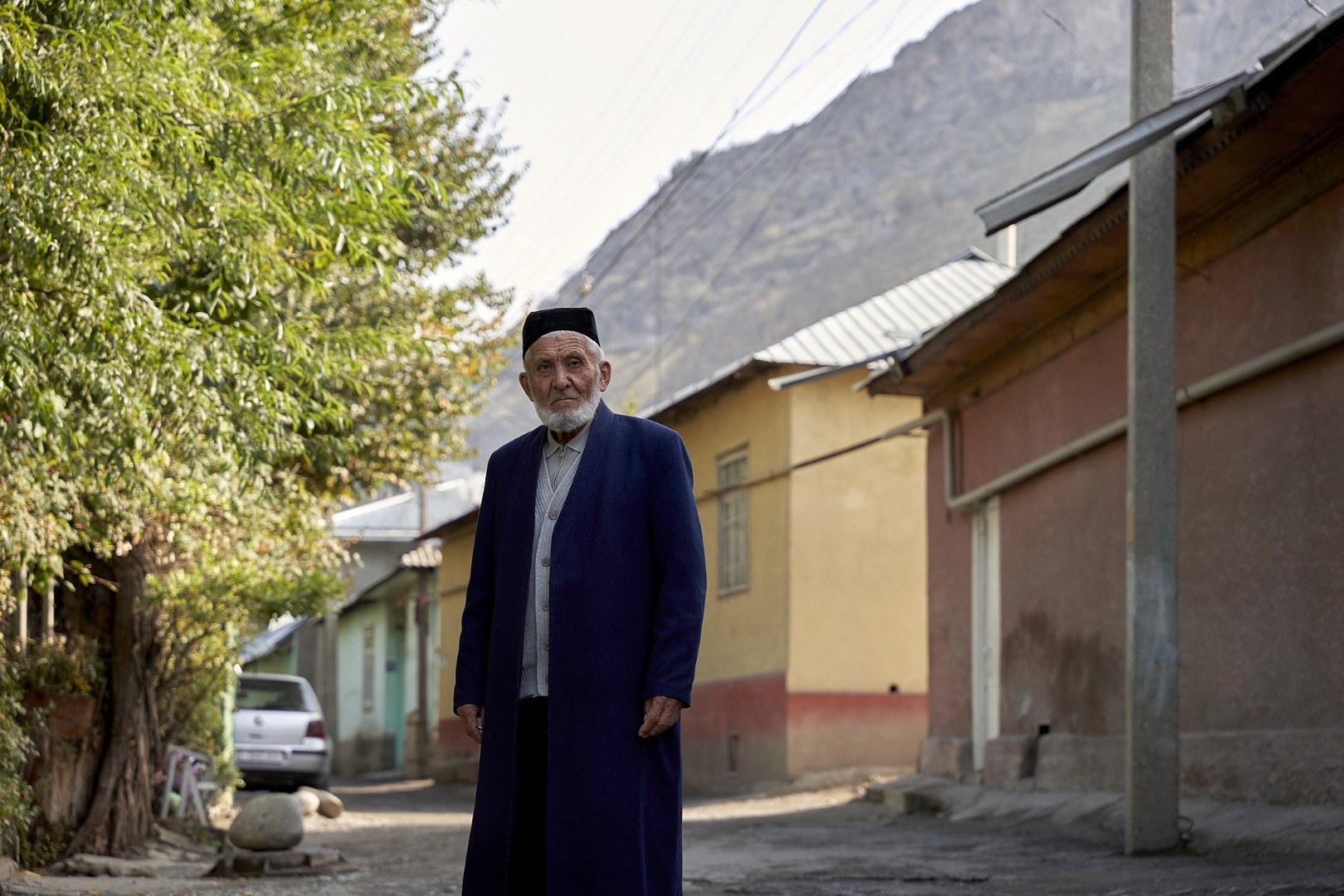
Artisans Quarter
Artisans Quarter is one of the favorite urban subjects of Osh painters. After Suleiman Mountain, it is the most recognizable location portrayed by local landscape…
-
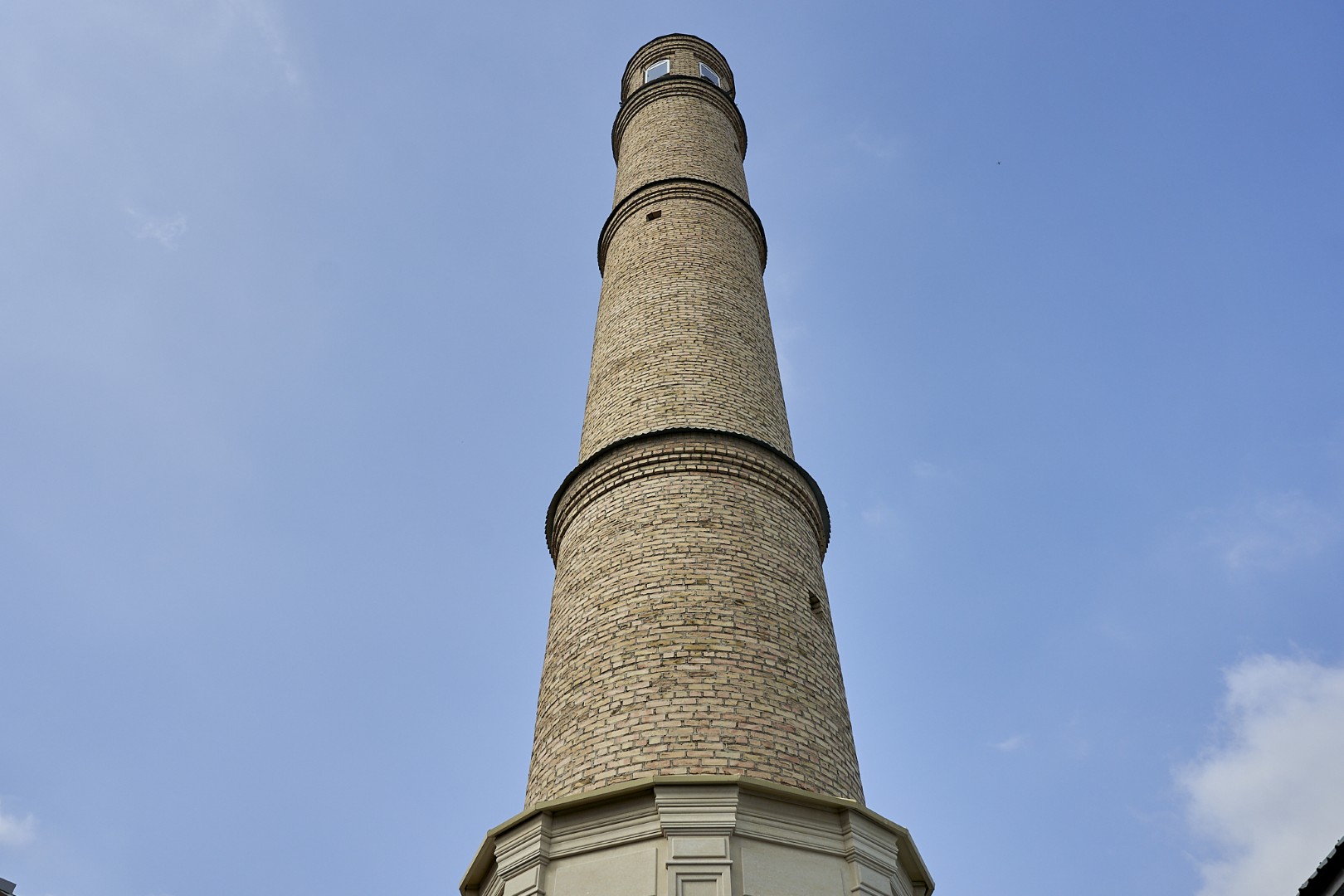
Mosque of Mohammed Yusuf Bai Haji Ogli
Mohammed Yusuf Bai Haji Ogli Mosque, an architectural monument of the 20th century, located on Navoi Street, is an example of a “guzar” (quarterly) religious…
Other Locations
-
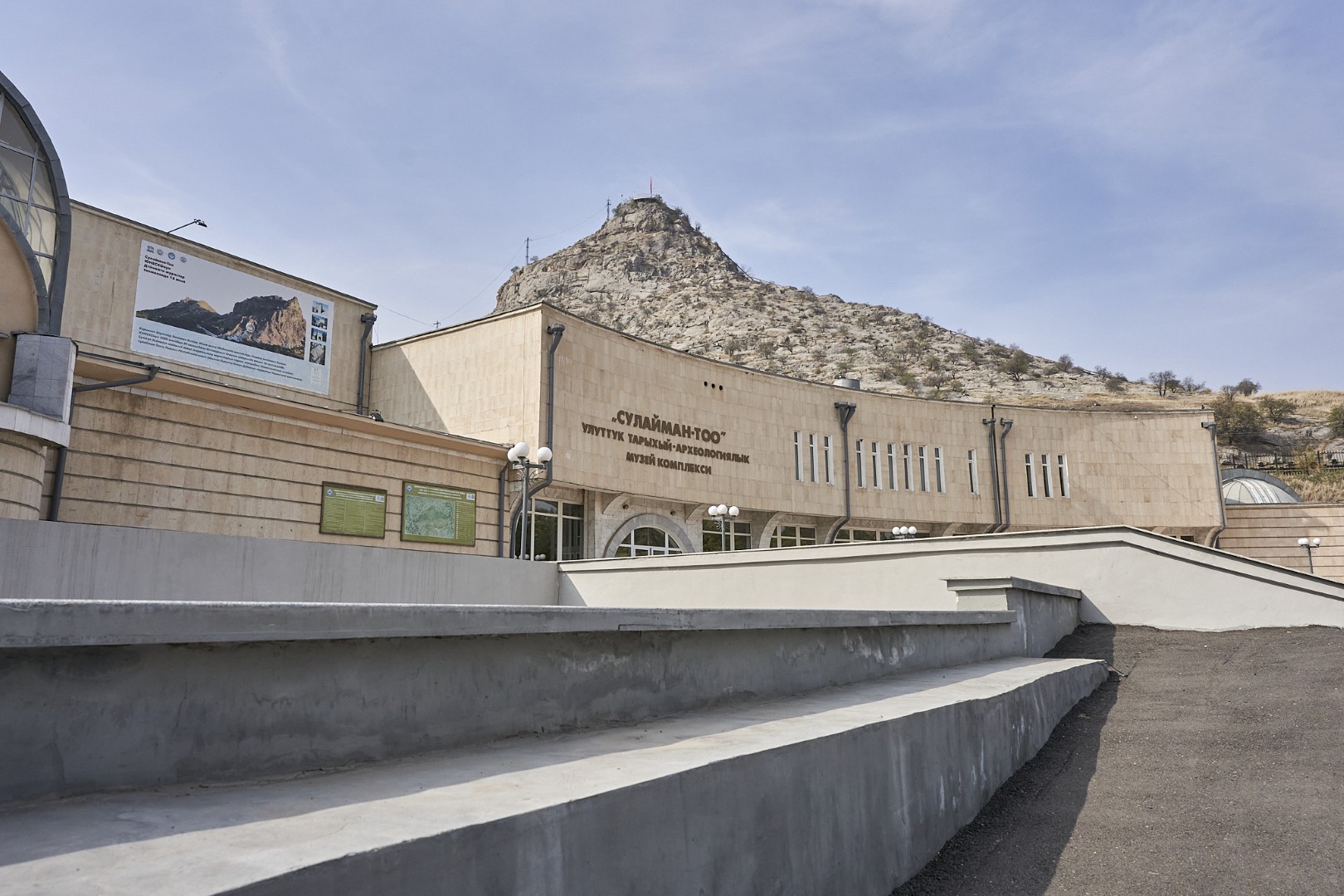
“Zero Milestone”: At the foot of Suleiman Mountain
The square at the foot of Suleiman Mountain’s north face has not always been the open and lively place it is today. Until the 1970s,…
-
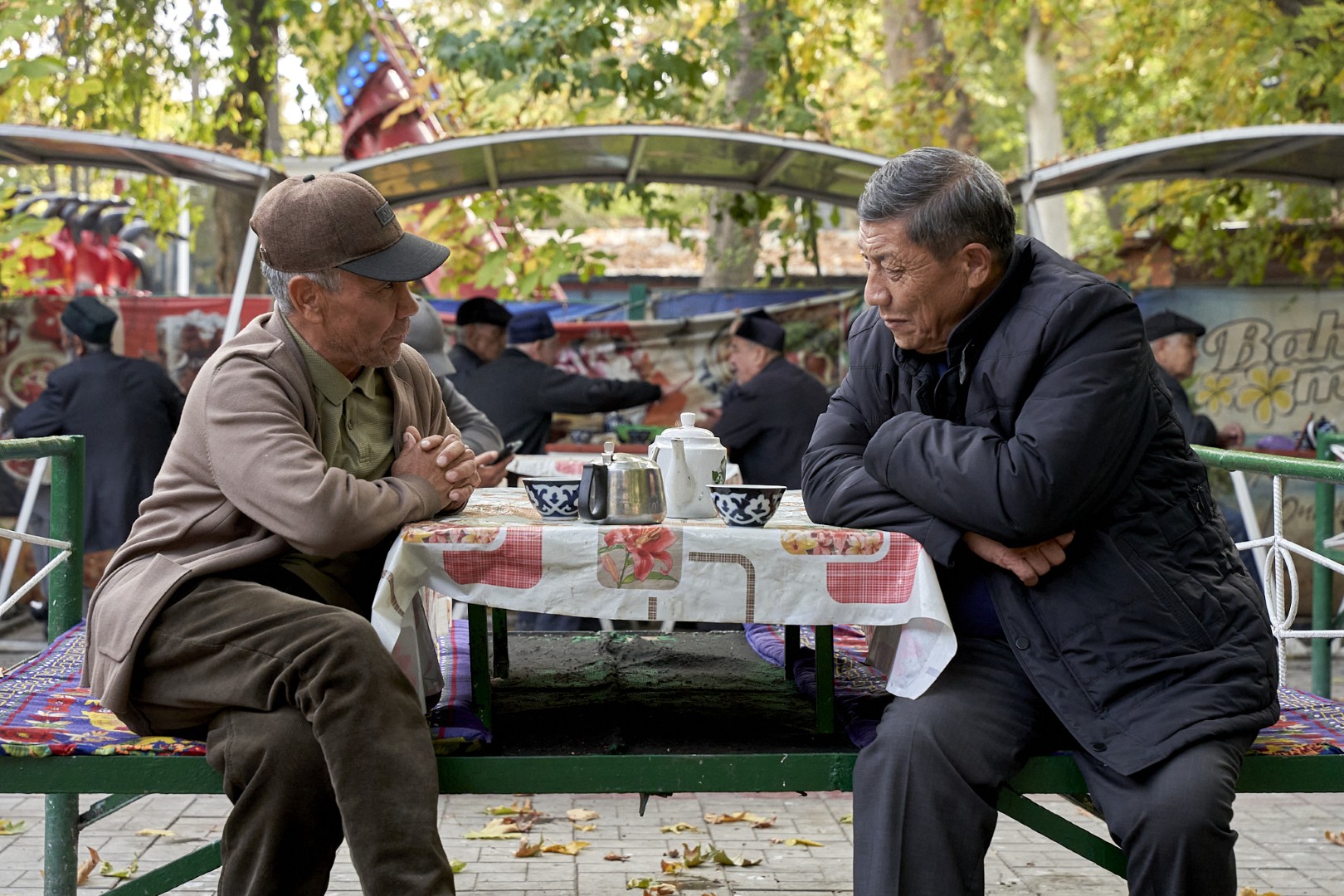
Pamil Tea
If you want to enjoy a cup of properly brewed fragrant green tea, Osh is the place to do it! Here, even in the height…
-

Osh Fortress
The Osh fortress was built in 1919 on the site of the former Tsarist Russian military barracks, located in the very center of the “new…
-

Monuments as symbols of changing eras
An imposing monument to Communist leader Vladimir Lenin, erected in May 1985, still stands in Osh’s central square. The statue itself is 11 metres high…




